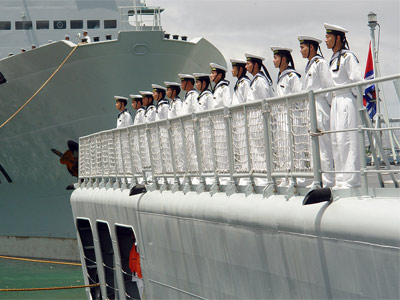China's Near-Seas Challenges
Mini Teaser: A threat to stability—for now.
Perhaps slowing growth will eventually help moderate public expectations and thereby allow Chinese leaders to pursue positive approaches even in the sensitive near seas. Until that happens, however, only U.S. security capabilities and partnerships can preserve the peace there that underwrites the success of all Asia-Pacific nations, including China itself.
Beijing is here to stay as a great power, and has the potential to recapture its historically preponderant regional status, as well as achieve unprecedented influence in a globalized world. Yet in the longer term, likely within a decade, China’s growth rate is almost certain to slow considerably and its domestic challenges proliferate while the United States—for all its problems—enjoys sustained advantages in national power and influence. Time is likely to be far kinder to America’s approach and overall position in the Asia-Pacific than to China’s. This may finally establish a basis for the two Pacific powers to achieve a “competitive coexistence” by allowing Beijing to adjust on its own rather than pressuring Washington. The key for the United States is to weather the present window of vulnerability without making unilateral concessions, losing credibility vis-à-vis its allies or China, or—worst of all—allowing Beijing to change the status quo through the threat or use of force.
Andrew S. Erickson is an associate professor at the Naval War College and an associate in research at Harvard University’s Fairbank Center for Chinese Studies. His Jamestown Foundation monograph, “Chinese Anti-Ship Ballistic Missile (ASBM) Development: Drivers, Trajectories and Strategic Implications,” offers further details about the subjects discussed in this essay.
Image: Pullquote: Allowing Beijing to use force, or even the threat of force, to alter the regional status quo would have a number of pernicious effects.Essay Types: Essay
Pullquote: Allowing Beijing to use force, or even the threat of force, to alter the regional status quo would have a number of pernicious effects.Essay Types: Essay 